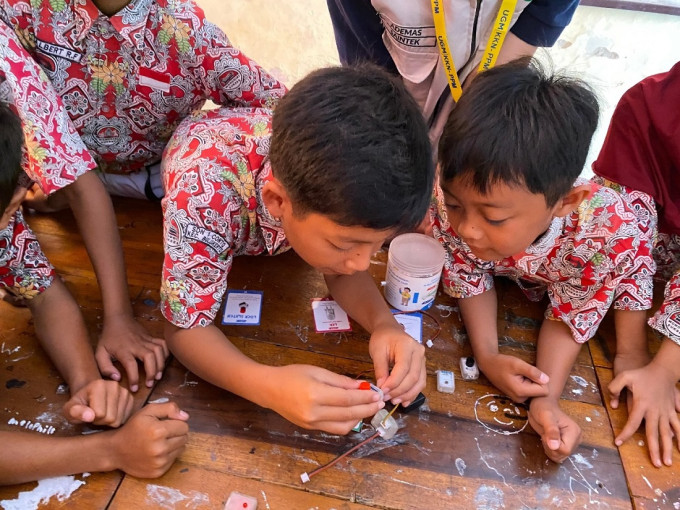
The UGM Community Service Program (KKN-PPM) team in Bulukerto Village, Wonogiri, Central Java, introduced electronics and robotics to elementary school students.
This introduction was done through fun, hands-on activities to engage students with creative and innovative concepts. The students were also taught how to assemble simple electrical circuits, introduced to robotics components, and shown how to use demonstration tools from Plego Indonesia.
Ademas Alam Pangestu, the UGM Science and Technology cluster coordinator, explained that the basic robotics introduction program aims to spark students’ interest in science and technology from an early age.
“By providing hands-on experience in designing and building systems, students are expected to develop critical thinking, problem-solving skills, and creativity,” Pangestu stated in a press release sent to reporters on Thursday (Aug. 15).
The introduction to basic robotics was focused on students from SD Negeri 1 Krandegan, SD Negeri 1, and SD Negeri 2 Conto, using demonstration tools from Plego Indonesia. In this activity, students were invited to become young innovators by engaging with basic robotics in an “innovation class” themed session.
“This activity took place over three days,” he said.
The basic robotics learning activities were diverse and tailored to the student’s level of understanding. The sessions began with an introduction to famous inventors of electric lamps and essential electrical circuit components such as batteries, wires, bulbs, and switches.
Students then practiced assembling a simple electrical circuit for a light bulb. Demonstration tools from Plego Indonesia made the assembly process easier and more enjoyable.
According to Pangestu, students were introduced to robotics components like input, output, and mainboards after mastering the basics of electrical circuits.
They learned about the functions of each component and how to connect them to form a more complex system. For instance, students were guided to create a simple robot that could move or respond to stimuli from the surrounding environment.
He noted that the Plego Indonesia demonstration tools played a crucial role in the success of this program. With their attractive and intuitive design, these tools made it easier for students to grasp complex concepts.
Moreover, Plego’s tools are very safe for children, allowing students to learn freely without risking accidents.
“These tools are also an innovative medium for basic robotics education that teachers in schools should introduce,” he added.
Tanti Purwaningrum, an SD Negeri 1 Krandegan teacher, welcomed the UGM KKN-PPM students’ program on basic robotics introduction using Plego.
She believes that activities like this positively impact students, making them more interested in science subjects, especially robotics and technology.
“They also become more confident in exploring creative ideas and trying new things,” she said.
On behalf of the teachers, she expressed that the Plego program has been very helpful. They have gained new knowledge and skills that can be applied in teaching.
“This program can also help and boost students’ motivation to learn,” she said.
Introducing robotics with Plego can inspire other schools to develop similar programs. The KKN-PPM team and the teachers hope this program can continue and become part of the science and technology curriculum.
Author: Agung Nugroho
Post-editor: Afif

